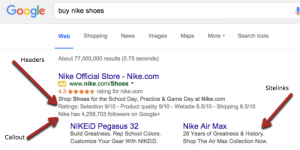
By Steve Turley, Published October 30, 2014
It is great to have an accurate diagnostic tool that will effectively tell you what is wrong with your Demand Gen programs. However, diagnosis is not very helpful if you do not have a treatment plan to solve the problem. The good news is, no matter the diagnosis, your Demand Gen problem has a cure! Matching the fix to the problem is usually not at all difficult. Let’s look at the proper approach.
Get Started
First, let’s recall the three things you can affect relating to total Demand:
- The number of Contacts in each stage (the sum of those representing the entire Funnel).
- The conversion rates from stage to stage.
- Time in stage, which reveals the Funnel velocity.
Understanding these metrics also provides us with the diagnostics necessary to understand our funnel problems and remedy those problems. We’ll look at three common problems and the remedies you can apply to each. Before we address those remedies, let’s recall a few principles of our demand funnel, so we can properly diagnose the problem and apply the remedy.
- The funnel should always be shaped like a funnel. That means early funnel stages should always contain more Contacts then later funnel stages. Although the exact numbers will vary from organization to organization, the general shape should be constant.
- Conversion rates should get higher as the Contact gets lower in the Demand Funnel. This should be universally true, since Contacts only progress as they become more and more likely to purchase. It would be highly unusual to find a higher conversion rate for MQLs than SQLs, for example.
- Time in stage will vary from organization to organization, with one exception. MQL-to-SAL should never take very long. In general, an MQL sitting in stage awaiting acceptance by Sales should not last more than 7 days. Otherwise the buyer’s interest level could wane and he or she moves on or forgets about the interest. We will look at this in our cases below.
Case 1: Stuck Inquiries
This case often happens when organizations do not have a content strategy. Without that strategy, communication is often also stuck in first gear, with messaging focused on attracting net new contacts into the funnel, rather than converting those already in the funnel. This is remedied with a comprehensive contact strategy that targets specific messaging to Contacts at every stage in the funnel, rather than sending the same message to everyone every time. Conversions from inquiry to MQL are all about offering additional information about reasons to move now.
Case 2: Stuck MQLs
This should be the simplest case to solve. If your organization has proper agreement between Sales and Marketing on the attributes of a “qualified” lead and the SLAs for Sales acceptance, nothing should ever get stuck in MQL state. If MQLs are getting stuck, it is most likely a process issue in which the responsibility for sales acceptance is not properly understood. Training and close management of the process will remedy this situation.
The second possibility is a technical process malfunction. Lead routing (usually performed on the CRM side) may not be actually sending MQLs to the proper queue or individuals. This is usually easy to diagnose by the complaints coming from the Lead recipients who are not getting the expected MQLs in their queues. Fixes usually need to be made in the Lead Assignment rules or MAP-CRM integration.
Case 3: Stuck SQLs
SQLs should never be technically “stuck.” If your product or service requires a long sales cycle, consideration for the length of cycle should already be in place. However, when leads do get stuck, in nearly all cases it can be tracked back to lack of discipline in dispositioning lead or opportunity status (see this {Demand Gen Brief} article: Four Ways You Are Marketing Backwards). Dispositioning leads in SQL stage is critical to the health of your demand funnel.
Change the conversation.
When Sales wants more leads, the conversation almost always ends up addressing adding new leads to the top of the funnel. Rarely does an organization take the time to examine what is going on mid-funnel and address concerns there, even though this will almost always provide a faster, cheaper and higher quality lift in lead flow. Although we’ve addressed some common fixes there, there are always considerations unique to your organization’s process and lead flow. Take the time to examine what is happening mid-funnel before rushing to add more leads to the top, which may only compound your problems.
Notes:
Your Demand Funnel is your chief diagnostic tool for Demand Generation.
Diagnose first, and only then apply the solution to the trouble spot.
Mid-funnel fixes are often faster, cheaper and of higher quality than top-of-funnel.
Now we’ve learned how to use our Demand Funnel as a diagnostic tool and how to apply remedies to the problems we’ve found. These are critical steps to maintaining the health of your Demand Funnel. However, we don’t want to just maintain our Demand Funnel, we want to improve it! Next week we will look at ways to improve our overall Demand Funnel performance in: Three Ways to Use Your Demand Funnel, Part 3. Optimize Your Lead Process!
Business Articles | Business 2 Community
(305)








